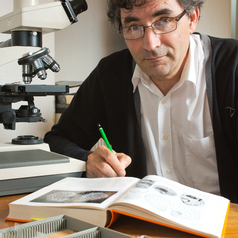Could Shipwrecked Tardigrades Have Colonized the Moon?
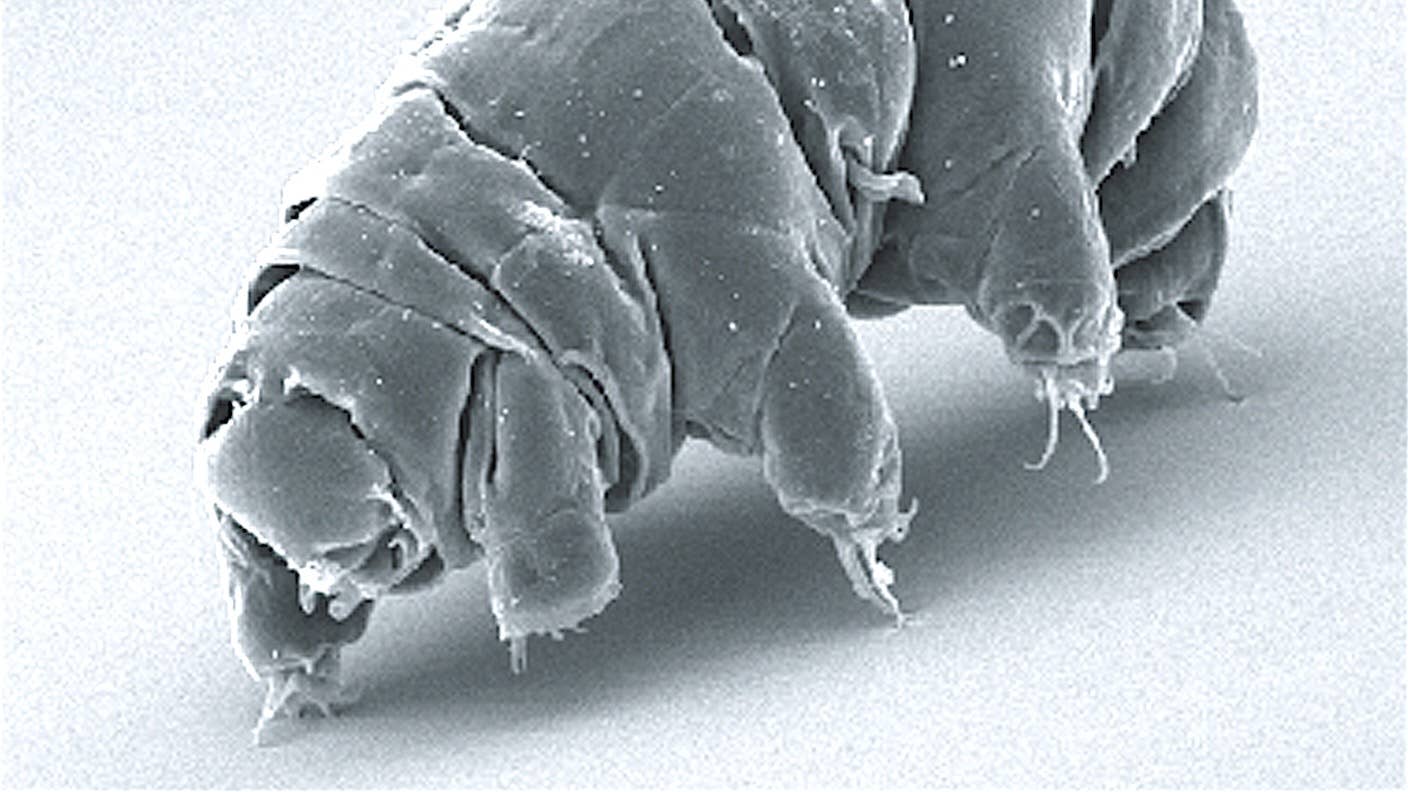
Share
Just over five years ago, on February 22, 2019, an unmanned space probe was placed in orbit around the moon. Named Beresheet and built by SpaceIL and Israel Aerospace Industries, it was intended to be the first private spacecraft to perform a soft landing. Among the probe’s payload were tardigrades, renowned for their ability to survive in even the harshest climates.
The mission ran into trouble from the start, with the failure of “star tracker” cameras intended to determine the spacecraft’s orientation and thus properly control its motors. Budgetary limitations had imposed a pared-down design, and while the command center was able to work around some problems, things got even trickier on April 11, the day of the landing.
On the way to the moon the spacecraft had been traveling at high speed, and it needed to be slowed way down to make a soft landing. Unfortunately during the braking maneuver a gyroscope failed, blocking the primary engine. At an altitude of 150 meters, Beresheet was still moving at 500 kilometers per hour, far too fast to be stopped in time. The impact was violent—the probe shattered, and its remains were scattered over a distance of around a hundred meters. We know this because the site was photographed by NASA’s LRO (Lunar Reconnaissance Orbiter) satellite on April 22.

Before and after images taken by NASA's Lunar Reconnaissance Orbiter (LRO) of the Beresheet crash site. Image Credit: NASA/GSFC/Arizona State University
Animals That Can Withstand (Almost) Anything
So, what happened to the tardigrades that were traveling on the probe? Given their remarkable abilities to survive situations that would kill pretty much any other animal, could they have contaminated the moon? Worse, might they be able to reproduce and colonize it?
Tardigrades are microscopic animals that measure less than a millimeter in length. All have neurons, a mouth opening at the end of a retractable proboscis, an intestine containing a microbiota and four pairs of non-articulated legs ending in claws, and most have two eyes. As small as they are, they share a common ancestor with arthropods such as insects and arachnids.
Most tardigrades live in aquatic environments, but they can be found in any environment, even urban ones. Emmanuelle Delagoutte, a researcher at the French National Center for Scientific Research (CNRS), collects them in the mosses and lichens of the Jardin des Plantes in Paris. To be active, feed on microalgae such as chlorella, and move, grow, and reproduce, tardigrades need to be surrounded by a film of water. They reproduce sexually or asexually via parthenogenesis (from an unfertilized egg) or even hermaphroditism, when an individual (which possesses both male and female gametes) self-fertilizes. Once the egg has hatched, the active life of a tardigrade lasts from 3 to 30 months. A total of 1,265 species have been described, including two fossils.
Tardigrades are famous for their resistance to conditions that exist neither on Earth nor on the moon. They can shut down their metabolism by losing up to 95 percent of their body water. Some species synthesize a sugar, trehalose, that acts as an antifreeze, while others synthesize proteins that are thought to incorporate cellular constituents into an amorphous “glassy” network that offers resistance and protection to each cell.
During dehydration, a tardigrade’s body can shrink to half its normal size. The legs disappear, with only the claws still visible. This state, known as cryptobiosis, persists until conditions for active life become favorable again.
Depending on the species of tardigrade, individuals need more or less time to dehydrate and not all specimens of the same species manage to return to active life. Dehydrated adults survive for a few minutes at temperatures as low as -272°C or as high as 150°C and, over the long term, at high doses of gamma rays of 1,000 or 4,400 gray (Gy). By way of comparison, a dose of 10 Gy is fatal for humans, and 40-50,000 Gy sterilizes all types of material. However, whatever the dose, radiation kills tardigrade eggs. What’s more, the protection afforded by cryptobiosis is not always clear-cut, as in the case of Milnesium tardigradum, where radiation affects both active and dehydrated animals in the same way.
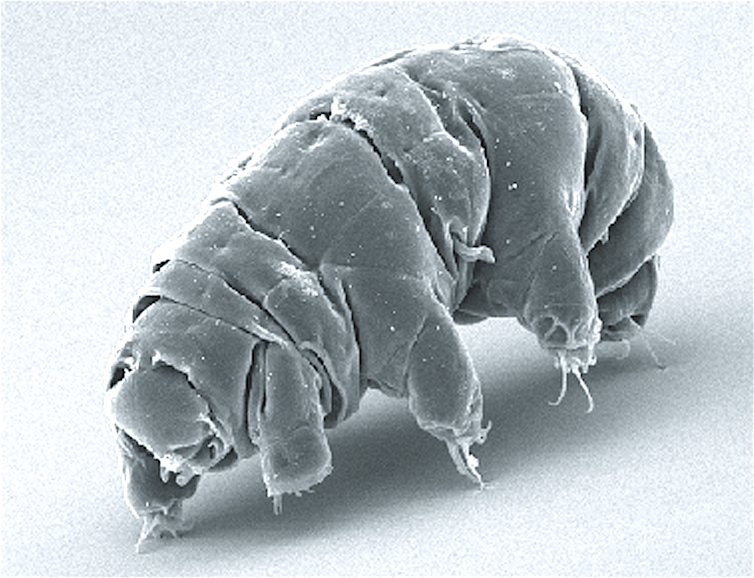
Image of the species Milnesium tardigradum in its active state. Image Credit: Schokraie E, Warnken U, Hotz-Wagenblatt A, Grohme MA, Hengherr S, et al. (2012), CC BY
Be Part of the Future
Sign up to receive top stories about groundbreaking technologies and visionary thinkers from SingularityHub.


Lunar Life?
So, what happened to the tardigrades after they crashed on the moon? Are any of them still viable, buried under the moon’s regolith, the dust that varies in depth from a few meters to several dozen meters?
First of all, they have to have survived the impact. Laboratory tests have shown that frozen specimens of the Hypsibius dujardini species traveling at 3,000 kilometers per hour in a vacuum were fatally damaged when they smashed into sand. However, they survived impacts of 2,600 kilometers per hour or less—and their “hard landing” on the moon, though unwanted, was far slower.
The moon’s surface is not protected from solar particles and cosmic rays, particularly gamma rays, but here too, the tardigrades would be able to resist. In fact, Robert Wimmer-Schweingruber, professor at the University of Kiel in Germany, and his team have shown that the doses of gamma rays hitting the lunar surface are permanent but low compared with the doses mentioned above—10 years’ exposure to gamma rays would correspond to a total dose of around 1 Gy.
Finally, the tardigrades would have to withstand a lack of water as well as temperatures ranging from -170 to -190°C during the lunar night and 100 to 120°C during the day. A lunar day or night lasts a long time, just under 15 Earth days. The probe itself wasn’t designed to withstand such extremes, and even if it hadn’t crashed, it would have ceased all activity after just a few Earth days.
Unfortunately for the tardigrades, they can’t overcome the lack of liquid water, oxygen, and microalgae—they would never be able to reactivate, much less reproduce. Their colonizing the moon is thus impossible. Still, inactive specimens are on lunar soil and their presence raises ethical questions, as Matthew Silk, an ecologist at the University of Edinburgh, points out. Moreover, at a time when space exploration is taking off in all directions, contaminating other planets could mean we would lose the opportunity to detect extraterrestrial life.
The author thanks Emmanuelle Delagoutte and Cédric Hubas of the Muséum de Paris, and Robert Wimmer-Schweingruber of the University of Kiel, for their critical reading of the text and their advice.
This article is republished from The Conversation under a Creative Commons license. Read the original article in English here or as originally published in French here.
Image Credit: Schokraie E, Warnken U, Hotz-Wagenblatt A, Grohme MA, Hengherr S, et al. (2012), CC B
Laurent Palka is a lecturer at the Muséum National d’Histoire Naturelle (MNHN) and specialist in protists, prokaryotes, and mycorrhizal fungi in the field of soil ecology and urban ecology (green roofs).
Related Articles

Data Centers in Space: Will 2027 Really Be the Year AI Goes to Orbit?
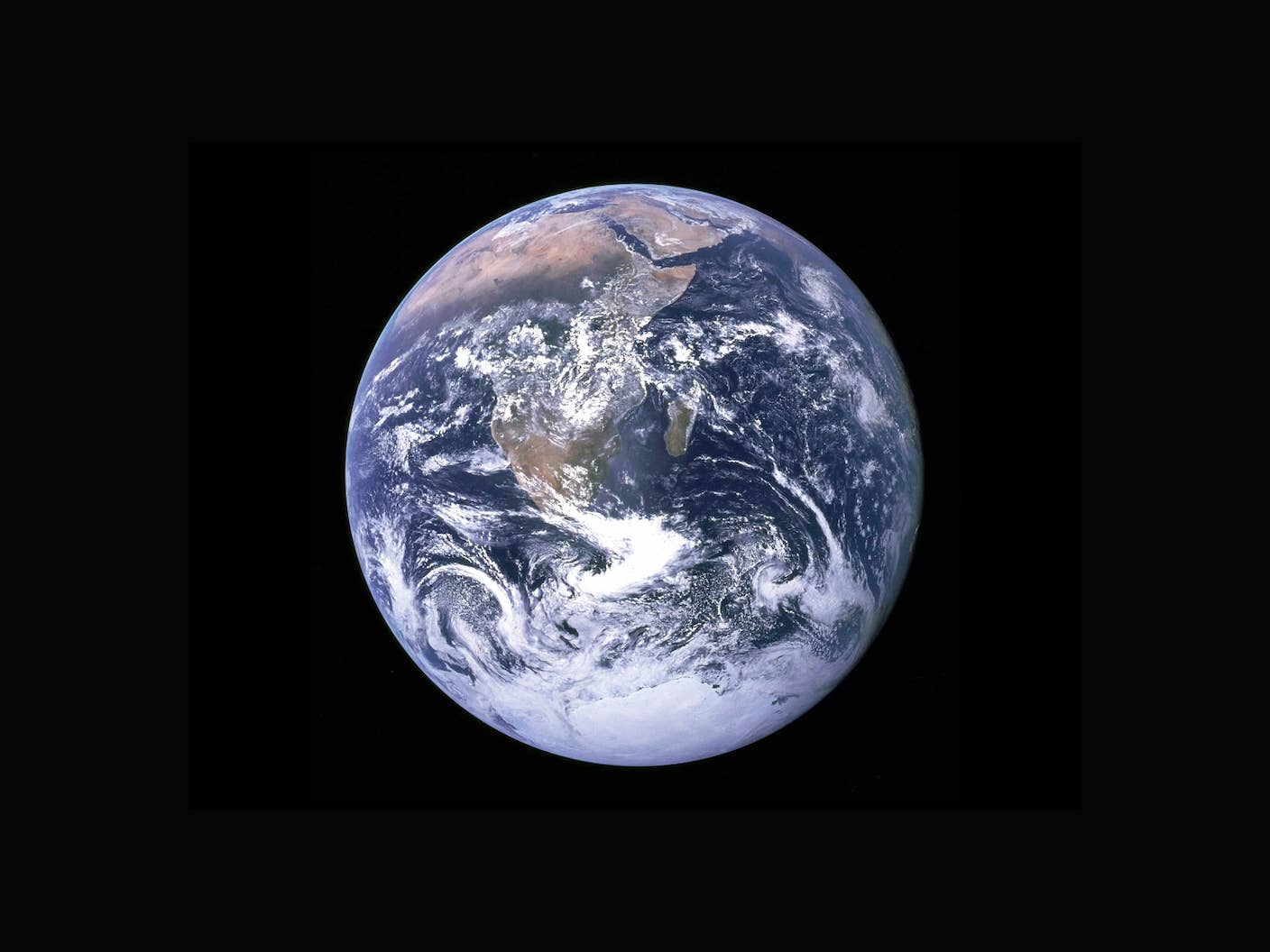
Scientists Say We Need a Circular Space Economy to Avoid Trashing Orbit
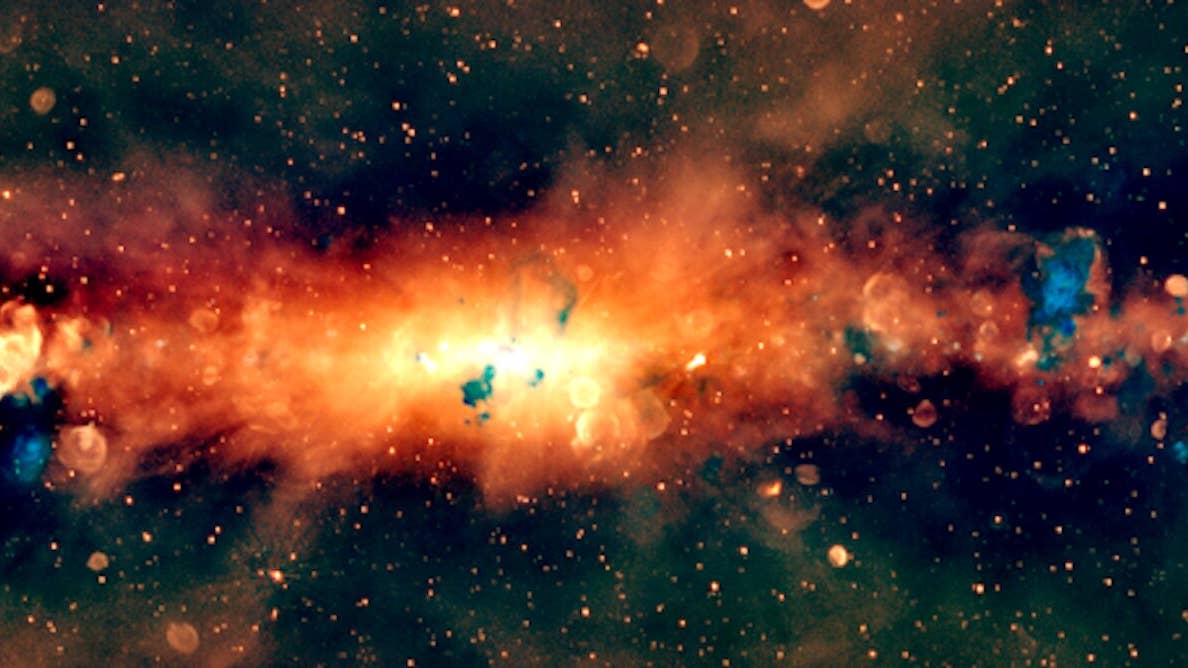
New Images Reveal the Milky Way’s Stunning Galactic Plane in More Detail Than Ever Before
What we’re reading
